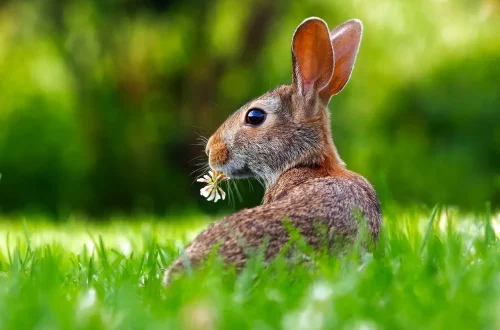
The Importance of Quality Horse Semen in Breeding Success
Breeding horses is an age-old practice that combines art and science to produce superior equine specimens. The success of breeding programs hinges on multiple factors, including genetics, environment, and management practices. Among these, the quality of horse semen stands out as a critical component that can influence the outcome of breeding efforts significantly.
In the world of equine reproduction, the importance of high-quality semen cannot be overstated. It serves as the vehicle for genetic material that will ultimately determine the health, performance, and characteristics of the offspring. Poor-quality semen can lead to lower conception rates, increased chances of miscarriage, and the birth of foals that may not meet the desired standards of conformation or athletic ability.
Furthermore, advancements in reproductive technologies have made it possible to utilize frozen and cooled semen, which has opened up new avenues for breeding. However, even with these technologies, the foundational element remains the quality of the semen used. Understanding what constitutes quality semen and how to ensure it is of the highest standard is essential for breeders who aspire to achieve consistent success in their breeding programs.
Factors That Determine Semen Quality
The quality of horse semen is influenced by several factors, each playing a pivotal role in the success of breeding efforts. These factors can be broadly categorized into biological, environmental, and management-related components.
Biologically, the health of the stallion is of utmost importance. A stallion that is in good health, free from infections, and has a well-balanced diet is likely to produce higher quality semen. Hormonal balance also plays a crucial role in semen production. Any disruptions in hormonal levels can adversely affect sperm production and motility, leading to reduced fertility.
Environmental factors include the stallion’s living conditions. Stress, whether from overcrowding, poor housing conditions, or inadequate nutrition, can have a negative impact on semen quality. Research has shown that stallions kept in a stress-free environment exhibit better reproductive performance, as stress can lead to hormonal imbalances and reduced sperm viability.
Management practices are equally essential. Regular veterinary check-ups can help identify any underlying health issues that may affect semen quality. Additionally, proper collection, processing, and storage techniques are vital. Semen must be collected in a sterile environment to prevent contamination, and its handling should be done with care to maintain its viability.
The timing of collection can also influence quality, as semen should ideally be collected when the stallion is most fertile, which typically corresponds with the mare’s estrus cycle. Understanding these factors allows breeders to optimize the quality of the semen and, in turn, improve the likelihood of successful breeding outcomes.
The Role of Semen Analysis in Breeding Programs
Semen analysis is an invaluable tool for breeders aiming to assess the quality of stallion semen. This analysis involves several tests that evaluate various parameters, including sperm count, motility, morphology, and viability.
Sperm count refers to the number of sperm present in a given volume of semen. A higher sperm count generally indicates better fertility potential, as it increases the chances of successful fertilization. However, it’s important to note that quantity alone does not guarantee success; the quality of the sperm is equally crucial.
Motility, or the ability of sperm to move effectively, is another critical parameter. Sperm that are highly motile are more likely to reach and fertilize the egg. The analysis often categorizes motility into progressive motility, which is the ability of sperm to move in a forward direction, and total motility, which includes all moving sperm regardless of direction.
Morphology assesses the shape and structure of sperm. Abnormalities in morphology can indicate underlying health issues and may negatively impact fertility. A high percentage of morphologically normal sperm is essential for achieving optimal breeding results.
Viability tests determine the percentage of live sperm in a sample. This is crucial because even if a semen sample has a high sperm count and motility, a low viability rate can hinder fertility.
By regularly conducting semen analysis, breeders can identify potential issues early on and make informed decisions regarding their breeding programs. This proactive approach can lead to more successful mating outcomes and ultimately enhance the overall quality of the breeding stock.
Advancements in Semen Preservation Techniques
The evolution of semen preservation techniques has revolutionized horse breeding, allowing breeders to extend the reproductive capabilities of stallions far beyond their natural lifespan. The two primary methods of preservation are freezing and cooling, each with its own set of advantages and best practices.
Freezing semen is a widely-used technique that allows for long-term storage. The process involves diluting the semen with a cryoprotectant to protect the sperm cells during the freezing process. Semen is then placed in straws or vials and stored in liquid nitrogen. This method enables breeders to transport semen across vast distances and store it for years, preserving genetic diversity and allowing for the use of top-quality stallions that may be located far away.
However, freezing can be detrimental to sperm quality if not done correctly. It is crucial to follow established protocols for cooling and freezing to ensure that sperm viability is maintained. Proper thawing techniques are equally important, as improper thawing can result in significant losses in sperm motility and viability.
Cooling semen, on the other hand, is suitable for short-term storage and transport, typically lasting up to 72 hours. This method involves chilling the semen to a temperature that slows down sperm metabolism while maintaining its viability. Cooling is often preferred for fresh or refrigerated semen delivery, as it minimizes the risk of damage associated with freezing.
Both methods require careful attention to detail and an understanding of the specific needs of the stallion and the semen being preserved. By mastering these techniques, breeders can maximize the potential of their breeding programs and ensure they are utilizing the best available genetics.
Choosing the Right Stallion for Optimal Results
Selecting the right stallion is a critical decision that impacts the success of any breeding program. Breeders must consider a variety of factors when making this choice, including the stallion’s pedigree, performance history, and overall health.
Pedigree plays a significant role in determining the potential of the offspring. A stallion with a proven lineage of successful competitors or champions is often a desirable choice. This background suggests that the stallion carries genetic traits that may be beneficial to the offspring, such as athleticism, temperament, and conformation.
Performance history is another essential consideration. Stallions that have excelled in competition or have produced successful offspring in the past are likely to pass on desirable traits. Breeders should review performance records and, if possible, speak to other breeders who have used the stallion to gather insights into the quality of the offspring produced.
Health and soundness are equally important. A stallion that has had a history of health issues may not be the best choice, as these problems can be inherited by the offspring. Regular veterinary evaluations and a thorough health check should be part of the selection process.
Lastly, compatibility with the mare is crucial. Breeders should take into account the mare’s traits and how they might complement those of the stallion. This strategic pairing can enhance the likelihood of producing a foal that meets the desired goals of the breeding program.
In conclusion, the importance of quality horse semen in breeding success cannot be understated. By understanding the factors that influence semen quality, employing semen analysis, utilizing advancements in preservation techniques, and making informed stallion choices, breeders can significantly enhance their chances of achieving optimal breeding results.
**Disclaimer:** This article is not intended as medical advice. For any health-related concerns, it is essential to consult a qualified veterinarian.




